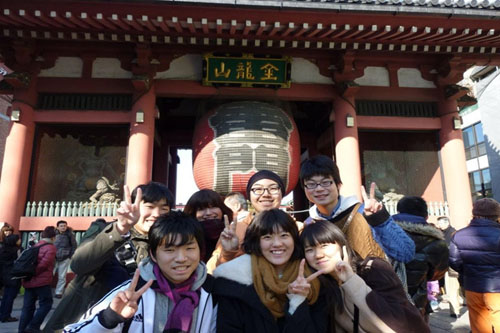An accident, as one dictionary definition tells it, is something undesirable and unfortunate, but by all means, something unintentional as well. Prima facie, it is something inevitable where pointing fingers is a hard process, sometimes even impossible. However, having the ability to practice full caution and prevention, the opportunity to avoid serious threat to us becomes possible as well. As for our university, what means does the administration practice in order to promote safety in its international programs? In the face of rapid internationalization of higher education in and outside campus, safety is one of the key issues of the day.
Various Levels to Promote Safety
“Safety has always been central to the university’s international programs,” says Shin Min-seon, exchange programs coordinator of Chonnam National University (CNU)’s Office of International Affairs (OIA). “Before, during and even after the various programs we always insist on safety again and again.” Shin explains that apart from constant reminders of the OIA to students scheduled to be sent on short and long-term programs, there are different levels into which safety of CNU students is being secured.
“We hold pre-departure meetings with the students four times before they are sent abroad to equip them with the proper information that they need,” she said. The information given to these students varies from cultural education, fundamental information to emergency standard operating procedures. Once the students are sent abroad, they are required to write a report once they arrive at their destination. Back home their coordinators duly contact them as soon as possible. During their stay at the partner university exchange students are required to submit a mid-period report and on returning to CNU, they are expected to submit a report to conclude the program. Does it mean that students are left on their own once they leave the country?


Are Communication Lines Kept Open?
“During their stay abroad, the coordinator of the partner university reports to CNU about the welfare of our students, and through constant communication we are able to detect what happens to them.” Shin explains that once abroad, CNU students are being taken care of by the partner university and on a larger scale by the South Korean embassy in that country. Choi Ji-Hwan (Senior, Department of English Language and Literature) who just returned from an internship program of the OIA in the United States, was very much satisfied with the situation in the partner university. “Communication between the coordinator of the partner university and CNU students who went there was very open indeed, and looking at this, safety abroad was not a worry for me,” says Choi. He says that apart from the messages signifying her need to submit a report for documentation at CNU, she was not able to receive any form of communication from the OIA.
In a sense, CNU turns over the students to the partner universities once they reach abroad, and most of the time it isn’t similar to Choi’s case. “Communication between the partner university and exchange students is very vague since it is different case by case—different per country, university, coordinator and even the students themselves. We can only rely on the effectiveness of the pre-departure meetings and the students themselves.” This poses a huge question on the safety levels of the program itself and the effectiveness of coordination between different people. However, “the OIA, through personal visitation, agreement and discussion by the Dean of the office himself, tries to choose the best and safest place to where we can put our students. We check the capabilities of the university and if it is fit for our students” explains Ms Shin.
“Personal Effort Is Central”
While we see the risk reduction efforts made by the OIA for CNU students, a huge worry is imposed upon students who would like to go abroad. “I am quite worried about the program with news abroad about instability everywhere” says Kim Yeon-Du (Senior, Department of Forestry and Landscape Architecture). Kim has been selected to be sent to the University of Missouri in the United States. “I think that the university has the responsibility to provide safe programs to its students since students cannot do anything once they are selected.” One sided information, therefore, permeates the tug-of-war on who is the key player in the security question. Now, if accidents and various problems arise, is it the university to be blamed for unsafe international programs?
“The university has the responsibility to assure that international programs are safe, but most importantly, personal effort is central” says Jung Da-som (Senior, Department of German Language and Literature), a returnee from Friedrich-Schiller-Universität Jena in Germany. “Accidents are everywhere, and more than anything else, one’s own good judgement is the most vital thing for one’s safety,” she adds.
There are various things to be done and loopholes to be patched up in the safety issue of CNU’s international programs, but what we need is to keep vigilant for our own safety and to never take for granted the invisible risk that we are facing while away from our home countries. There are recent examples to it, and in order for such an unfortunate loss to not occur again in our midst we should equip ourselves with safety precautions on our own. Prevention is definitely better than any cure.
By Rigoberto Banta Jr., Student Editor
[News Focus]
Rigoberto Banta Jr. 기자
tribune@cnumedia.com

